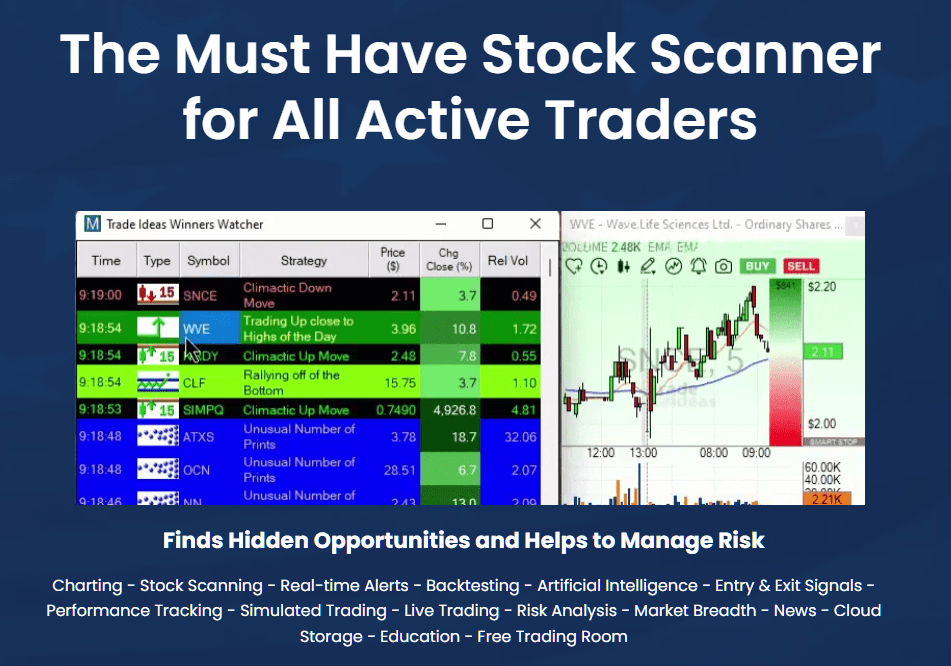20 Great Suggestions For Choosing Ai Stock Sites
20 Great Suggestions For Choosing Ai Stock Sites
Blog Article
Top 10 Ways To Evaluate The Quality Of Data And The Source Of Ai Analysis And Stock Prediction Platforms
To ensure accurate and reliable information, it is crucial to evaluate the accuracy of the data sources and AI-driven trading platforms for stocks. A poor quality of data could lead to inaccurate predictions, financial losses, or even a lack of trust to the platform. Here are 10 of the top strategies to evaluate data sources and quality.
1. Verify the data sources
Check the source of the data. Check to see if the platform uses trusted and reliable providers of data, like Bloomberg, Reuters or Morningstar.
Transparency: The platform must openly disclose the data sources it uses and update them regularly.
Avoid dependency on one source: Trustworthy platforms often aggregate data from several sources to reduce bias and errors.
2. Check the Freshness of Data
Real-time data as opposed to. data delayed Find out if the platform offers delayed or real-time data. Real-time data is crucial for active trading. Data that is delayed can be sufficient to provide long-term analysis.
Verify the frequency of updating data (e.g. hourly minutes by minutes, daily).
Consistency of historical data: Ensure whether the historical data is free of gaps and anomalies.
3. Evaluate Data Completeness
Search for missing data. Examine for gaps in historical data, missing tickers and incomplete financial statements.
Coverage: Make sure the platform is able to cover a broad selection of stocks, indices, and markets relevant to your trading strategy.
Corporate actions: Check if the platform records dividends, stock splits, mergers as well as other corporate actions.
4. Accuracy of Test Data
Consistency of data can be assured by comparing the data of the platform with other trustworthy sources.
Search for errors by looking for the outliers or financial metrics that are incorrect.
Backtesting. You can test strategies using historical data and compare the results to what you expected.
5. Examine the Data Granularity
Detail: Make sure the platform provides granular information like intraday prices and volume, spreads, bid and ask, as well as the depth of your order book.
Financial metrics: See if the platform provides comprehensive financial statements (income statement and balance sheet, as well as cash flow) and the most important ratios (P/E P/B, ROE, etc. ).
6. Verify that Data Processing is in place and Cleaning
Normalization of data is essential to ensure consistency.
Outlier handling: Check how the platform deals with outliers or anomalies that are in the data.
Incorrect data: Determine whether the platform has reliable methods to fill in gaps data points.
7. Assessment of Consistency in Data
Timezone alignment - Ensure that all data is aligned with the same local time zone to avoid any discrepancies.
Format consistency: Check if the data is presented in an identical format (e.g., units, currency).
Cross-market compatibility: Verify that the information coming from various exchanges and markets are harmonized.
8. Determine the relevancy of data
Relevance to trading strategy: The data should be aligned with your trading style (e.g., technical analysis, fundamental analysis, quantitative modeling).
Selecting features: Determine whether the platform offers pertinent features (e.g., macroeconomic indicators, sentiment analysis or news data) that can help improve forecasts.
Check the integrity and security of your data
Data encryption: Ensure that your platform has encryption in place for data transmission and storage.
Tamper-proofing: Ensure that the data is not manipulated or altered by the platform.
Compliance: Verify that the platform is in compliance with any laws governing data protection (e.g. GDPR, the CCPA).
10. The transparency of the AI model on the Platform is verified
Explainability. Be sure to comprehend how the AI uses data to create predictions.
Bias detection - Examine to determine if your system actively monitors data and models for biases.
Performance metrics: Examine the platform's track record and the performance metrics (e.g., accuracy precision, recall, etc.)) to determine the accuracy of its predictions.
Bonus Tips
Reputation and feedback from users Review reviews of users and feedback to assess the reliability of the platform.
Trial period: You may test the data quality and capabilities of a platform with the demo or trial before deciding to purchase.
Support for customers - Ensure that the platform you choose to use is able to offer a robust customer service to solve any data-related issues.
The following tips can aid in assessing the sources of data as well as the quality of AI stock predictions platforms. You'll be able to make accurate and informed decisions about trading. Follow the top link for stock analysis app for site advice including best ai etf, chatgpt copyright, best ai for trading, ai investing app, copyright advisor, trading ai bot, investing ai, ai investment platform, ai stocks to invest in, free ai trading bot and more.
Top 10 Tips To Assess The Scalability Ai Stock Predicting/Analysing Trading Platforms
The ability to scale AI-driven trading and stock prediction platforms is essential to ensure they can cope with increasing volume of data, demands from users as well as market complexity. Here are 10 top tips for evaluating scalability.
1. Evaluate Data Handling Capacity
Check to see if your platform is able to analyze or process large datasets.
Why? Scalable platforms have to manage increasing volumes of data without compromising performance.
2. Test the Real-Time Processing Capability
Tip: Assess how well the platform can process real-time data streams like live stock prices, or breaking news.
What's the reason? The analysis in real-time of trading decisions is crucial because delays could lead you to missing opportunities.
3. Check Cloud Infrastructure and Elasticity
Tips: Find out whether the platform utilizes cloud-based infrastructure (e.g., AWS, Google Cloud, Azure) and is able to scale resources dynamically.
Cloud platforms are able to allow for elasticity. The system can be scaled up or reverse depending on the demands.
4. Algorithm Efficiency
Tips: Find out the effectiveness of AI models that are employed to predict (e.g. Deep Learning and Reinforcement Learning).
Reason: Complex algorithms are resource-intensive, so the ability to optimize these algorithms is essential to ensure scalability.
5. Learn more about Parallel Processing and Distributed Computer Systems
TIP: Find out if the platform uses parallel processing or distributed computing frameworks (e.g., Apache Spark, Hadoop).
Why: These new technologies provide faster data analysis and processing on multiple nodes.
Examine API Integration, and Interoperability
Tips Try to test the platform's capacity to connect with APIs from outside (e.g., brokerage APIs, market data providers APIs).
Why: Seamless platform integration ensures it can adapt to new sources of data or trading environment.
7. Analyze User Load Handling
Tip: Simulate high user traffic to test how the platform performs under stress.
Why: A scalable platform will provide performance even as the amount of users grows.
8. Review the model's retraining capacity and adaptability
Tips - Check how frequently the AI model is retrained and with what degree of efficiency.
Why: Models must constantly change to keep up with the ever-changing market in order to remain accurate.
9. Check Fault Tolerance (Fault Tolerance) and Redundancy
Tips. Make sure that your platform has failover systems and redundancy in case of hardware or software failures.
Why: Downtime is costly for trading. So fault tolerance is crucial to the scalability.
10. Monitor Cost Efficiency
Examine the cost of your platform that includes cloud resources, storage and computation power.
The reason is that it should be at a price that is viable. This means that you must balance efficiency against cost.
Bonus Tip Future Proofing
Ensure the platform is constructed to integrate new technologies (e.g. quantum computing, quantum computing, advanced NLP) and adapt to changes in the regulatory environment.
If you focus on these elements you will be able to assess the scalability of AI stock prediction and trading platforms, ensuring they are robust, efficient, and ready for future expansion. See the recommended his comment is here on free ai tool for stock market india for website tips including ai for investing, best ai trading software, stock ai, trader ai app, ai stock trading, trading ai bot, ai trading, ai stock picks, best stock analysis website, best ai for trading and more.